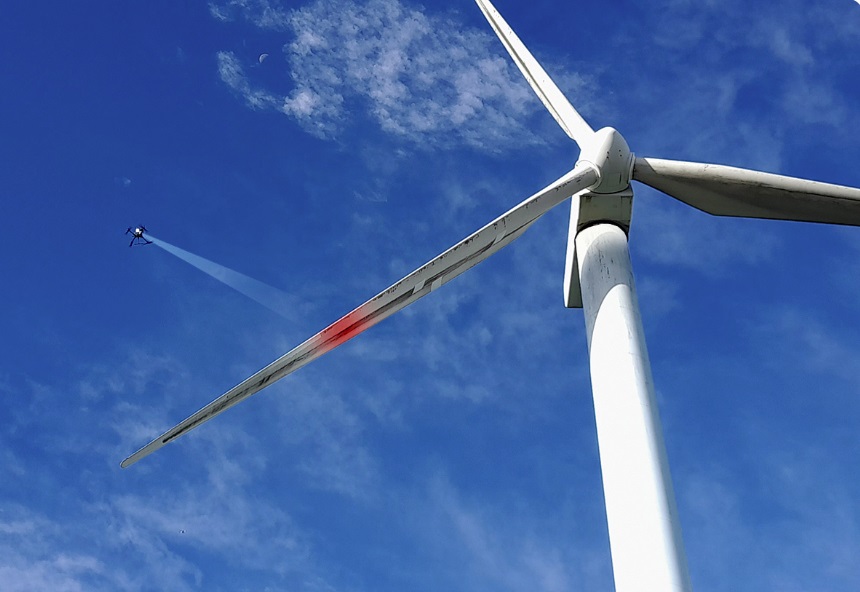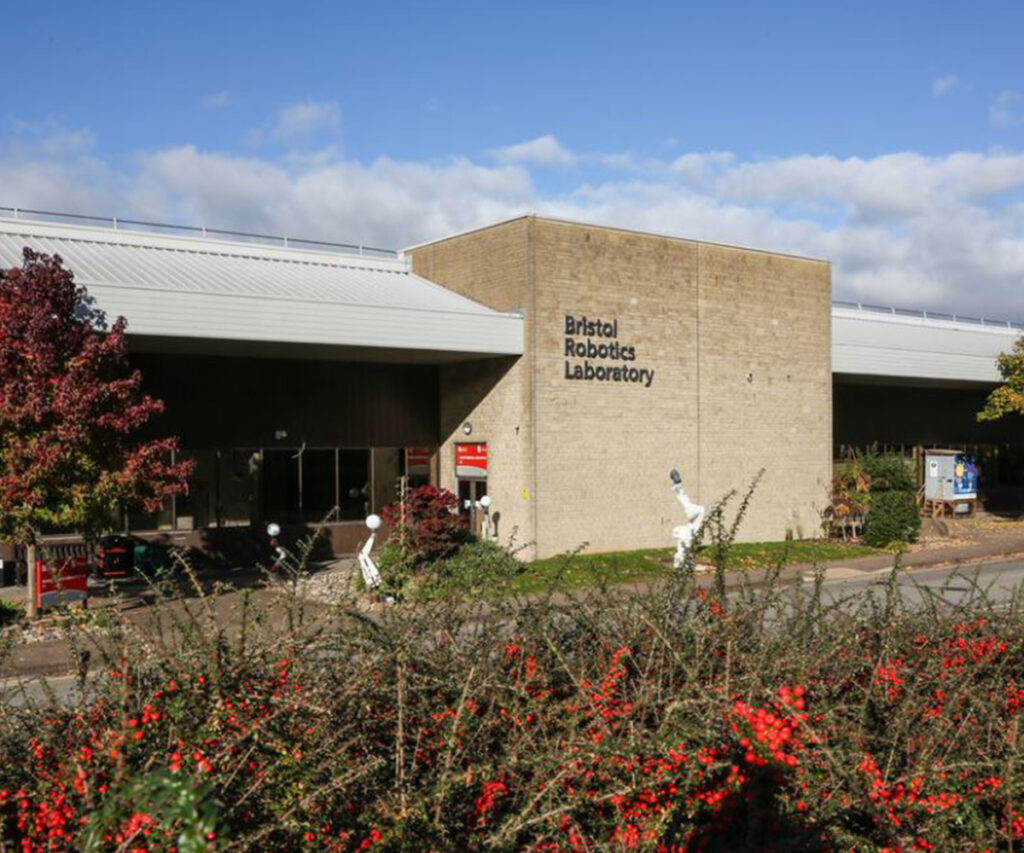Artificial Intelligence
Future Telecoms
Quantum
Future telecoms 2025 to 2026: from faster networks to thinking infrastructure
Reading time: 7 mins
AI and robotics are transforming industries like renewable energy, construction, and waste management to combat climate change
One of the most urgent problems that the world currently faces is the climate crisis, with many countries and companies setting themselves ambitious goals to reach net zero by 2050.
According to independent group Net Zero Tracker, half of the world’s largest 2,000 publicly listed companies have a net zero target and around 145 countries have announced similar pledges.
But in an energy-intensive world where emissions come from our built environment, transport, agriculture, and industry, this is not going to be easy to achieve.
AI and robotics are being touted as solutions to a range of problems, from labour shortages to curing disease, but what role will they play in cooling an ever-warming world?
One of the key ways artificial intelligence can help is by sifting through vast amounts of climate data to provide more accurate predictions about the scale of the problem. Already AI algorithms are offering insights that help manage and predict weather patterns, as well as identifying issues such as flooding and forest fires.
Robots too are playing a pivotal role when it comes to renewable energy sources such as wind power.
Perceptual Robotics is a spinout from the University of Bristol and provides AI-enabled drones to monitor wind farms.

Equipped with high-resolution cameras and sensors, these drones capture detailed images of turbine components, especially the blades. The AI technology then analyses this data to detect issues such as blade damage, erosion, and structural defects.
Founder Kostas Karachalios says that a key feature of the system is the speed with which it can process thousands of images to provide recommendations regarding the type and severity of damage.
“Our solution has identified a range of issues, including minor surface cracks, erosion, and more significant structural damage that could lead to major failures if not addressed promptly,” says Karachalios. “One of the key strengths of our AI technology is its consistency in delivering accurate results. It can detect up to 14% more damage compared to other inspection methods. This higher detection rate ensures that no potential issues are overlooked, allowing operators to address them before they escalate into costly problems.”
And the tech is helping the humans too.
“They optimise operational efficiency, reduce manual labour, and enhance safety,” adds Karachalios.
“For instance, our drones eliminate the need for technicians to climb turbines to inspect turbines, reducing the risk of accidents.”
Clean tech is a burgeoning area and one that a lot of investors are keen to back. According to the Tony Blair Institute, approximately $50 billion of VC funding went towards climate-tech start-ups globally in 2023, with climate-tech projects accounting for 70% of total VC investment that year.
Chris Hocknell is the director of sustainability consultancy Eight Versa and he believes AI and robotics could radically improve the renewables industry.
“There’s a bit of a lie going on in the green space – that renewables are cheaper than fossil fuels, and that’s not the case,” says Hocknell. “Renewables end up costing more because of the inefficiency and the variability. But if we’re using AI and better climate modelling and weather forecasting, and we can say with 99% confidence what the solar output is going to be, or what the wind output is going to be in four hours, then that actually kind of flips the game on renewables and makes larger penetrations of them much more likely.”
When it comes to reaching net zero goals, it is traditional industries that will need to make the most radical changes. Take construction for example, which accounts for at least 30% of global energy use and 27% of emissions.
One of the ways that emissions can be reduced in this carbon-heavy industry is by employing smart design and manufacturing processes. From using complex 3D modelling to work out the structures and mechanics of a build or even to print entire buildings, to robots building units off-site or architectural firms using VR when designing, tech is becoming a must-have tool in the industry.
But often it is the materials themselves – the glass, the steel, and the concrete – that are not being decarbonised very well.
Leko Labs describes itself as a carbon-negative construction company and is developing a system that could replace up to 75% of the concrete and steel currently used in the industry with wood and wood fibre.
The Luxembourg start-up makes use of artificial intelligence and robotics, and has designed software to automate crucial stages of the design process.
Hocknell said that there was a lot of interest in creating green building materials.
“Cement and steel are the two big construction ingredients and they are the single largest contributors to the carbon footprint of the build environment. It’s really the refining of the cement itself where the emissions are and there’s been lots of work over the last 10 years looking at replacements, for example putting in industrial by-products like ash.”
But it may be that moving construction to robot-led factories is where the biggest gains will be found.
“To achieve the housing targets that we have, you’re going to need off-site manufacturing, basically where you build big units in a factory, and then they all get shipped and bolted together on the site in a fraction of the time,” adds Hocknell. “It’s quicker. It’s done in a controlled environment. And I think that is going to be the future of house building.”

But, he adds, it will take “enormous investment” in an industry that is traditionally conservative.
“We have a labour and skill shortage in the construction industry,” says Hocknell, “which is roughly around a quarter of a million people by 2026, and it doesn’t look like there’s any chance of that being filled, so I think that when that starts to crunch, you are going to see big manufacturers start moving to more off-site fabrication.”
He points to established players such as Balfour Beatty, which uses AI and robotics to automate routine construction tasks, improve site safety, and enhance project management. Or Shimizu Corporation, which employs AI-equipped robots, such as the Robo-welder and Robo-carrier, on construction sites to automate tasks and improve efficiency.
Venture capital firm noa describes the built world as “humanity’s OS” and has been focusing its investments on green alternatives.
“The built world represents 40% of CO2 emissions yet receives less than 5% of global venture dollars, but research from noa shows that the rate of investment growth in the built world tech overtook the wider venture market, fintech, and even climate tech over the last five years,” noa investor Jess Clemans tells Foresight.
Reports from both McKinsey and Boston Consulting Group estimate that the transition to net zero by 2050 will require around $275 trillion in cumulative spending on physical assets, and an additional seven million skilled green energy workers by 2030.
Robotics will be crucial to plug the skills gap, thinks Clemans.
“Historically, robots have done this by automating simple repetitive tasks,” says Clemans. “However, we are now seeing a new generation of much more flexible and adaptable robots come onto the market that can do more than just simple tasks, thanks to software and AI model improvements. This includes navigating complex terrain, lifting solar panels, placing them correctly on trackers and installing pins.”
One of the biggest issues facing the drive to net zero is the amount of stuff we consume.
A stark reminder of how fast fashion and the throwaway culture of the West impacts the environment came last year when a picture of a huge pile of clothes dumped in the Atacama Desert went viral. The pile, which was visible from space, provided a damning snapshot of the need to improve how we dispose of the stuff we no longer want.

The obvious solution is to consume less, but improved packaging and more efficient recycling are also crucial to eliminating the clothes mountains that are increasingly part of the landscape in the developing world.
“Our AI technology identifies the materials sent to recycling facilities and determines which pieces of packaging or contamination the robot will pick and which to leave on the line,” JD Ambati, founder and chief executive of climate tech firm EverestLabs, tells Foresight. “Robotic sorting is super helpful because it is more accurate and efficient than traditional hand sorting in quality control and net new recovery roles, where overworked employees are repetitively sorting materials for eight hours a day and can barely sort 10-15 objects per minute.”
Ambati adds that “robots and recycling may seem unlikely companions, but they are improving the recycling process for the better.”
For all the help AI can provide in moving to a more sustainable future, there is a major downside – AI itself is incredibly energy-hungry.
A report from Goldman Sachs suggests that Europe needs $1 trillion-plus to prepare its power grids for AI and that the energy needed to support data storage is expected to double by 2026. Data centres will use 8% of US power by 2030, compared with 3% in 2022.
Google set itself an ambitious goal to release no more greenhouse gases into the air than it removes by 2030, but a recent report showed it is a long way off its targets. Emissions from the tech giant actually grew by 13% in 2023 due to the demands of AI and the use of data centres.
So how do we ensure that the solutions we are creating to help solve the climate crisis, don’t become part of the problem?
“I think AI is going to be a net positive, inevitably,” says Hocknell. “But it really depends where the AI is going to be pointed. If it is pointed in unproductive directions then it is going to be a drain. But using it for things such as weather analysis and improving our climate models, which underpin the whole drive, that would be a great benefit.”
The issue of data centres could also be solved by moving them to places such as Northern Europe and Scandinavia where the grids are less carbon intense, he adds.

Jane Wakefield has been a technology journalist for more than 20 years covering every aspect of technology, from regulation to broadband, smart cities to artificial intelligence. She has travelled the world making radio docs for the BBC, including witnessing a world first drone flight across Lake Victoria. Her dubious claim to fame is being the first UK journalist to interview a sex robot. She is now a freelance writer, podcaster, media trainer and conference host.
Quantum
Reading time: 10 mins
Quantum
Reading time: 10 mins
Quantum
Reading time: 11 mins
Robotics
Reading time: 1 mins
Quantum
Reading time: 3 mins